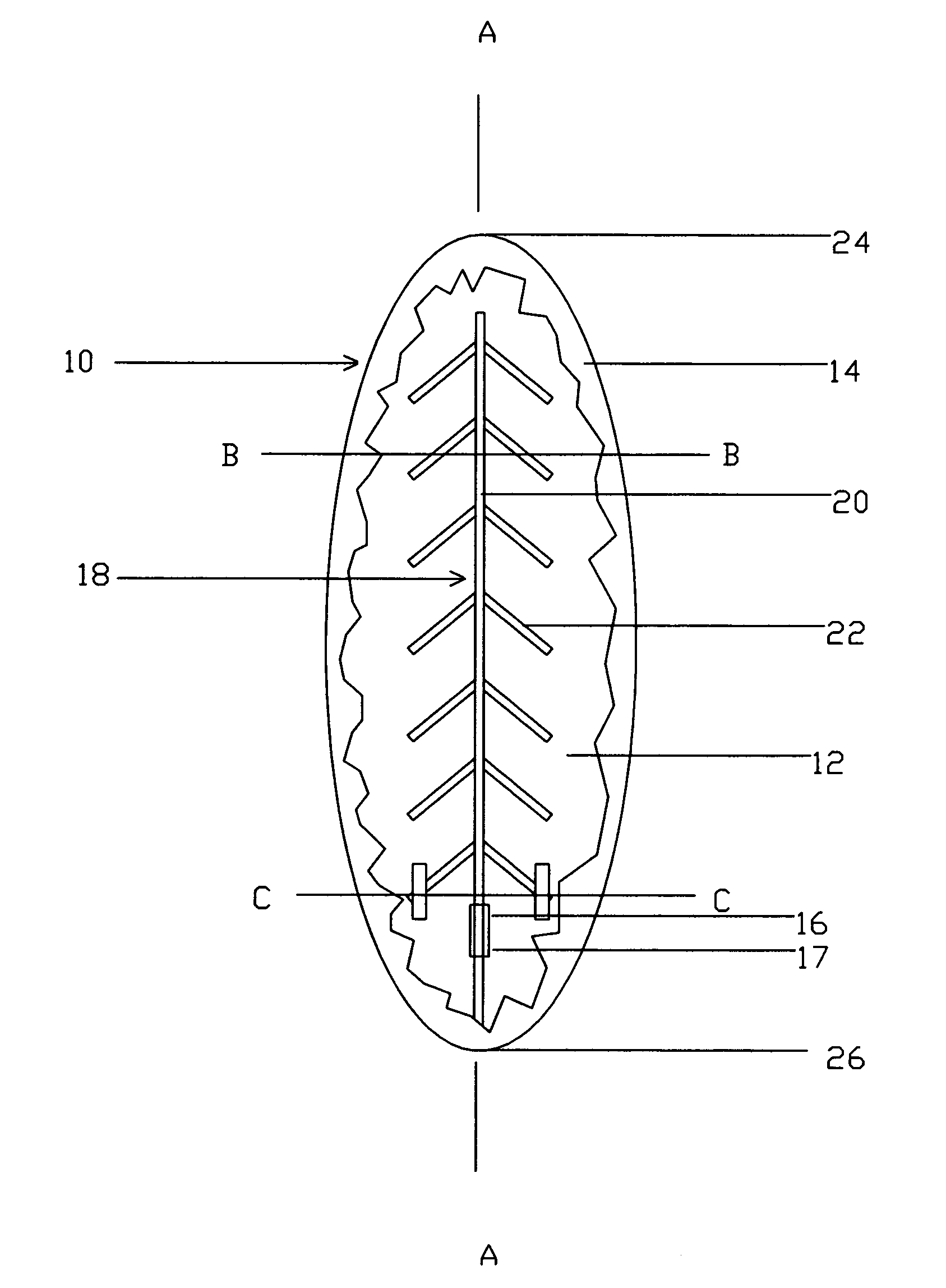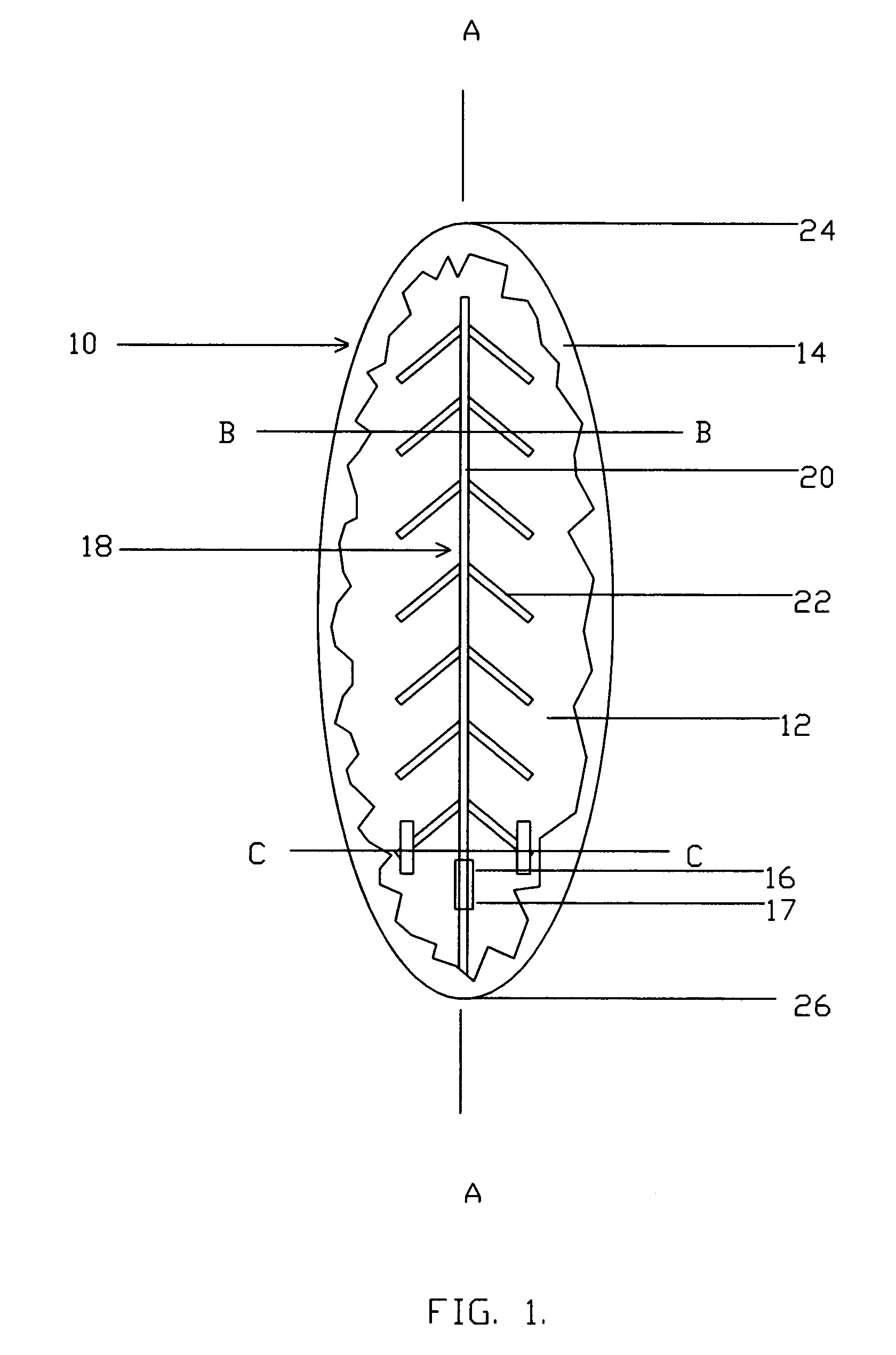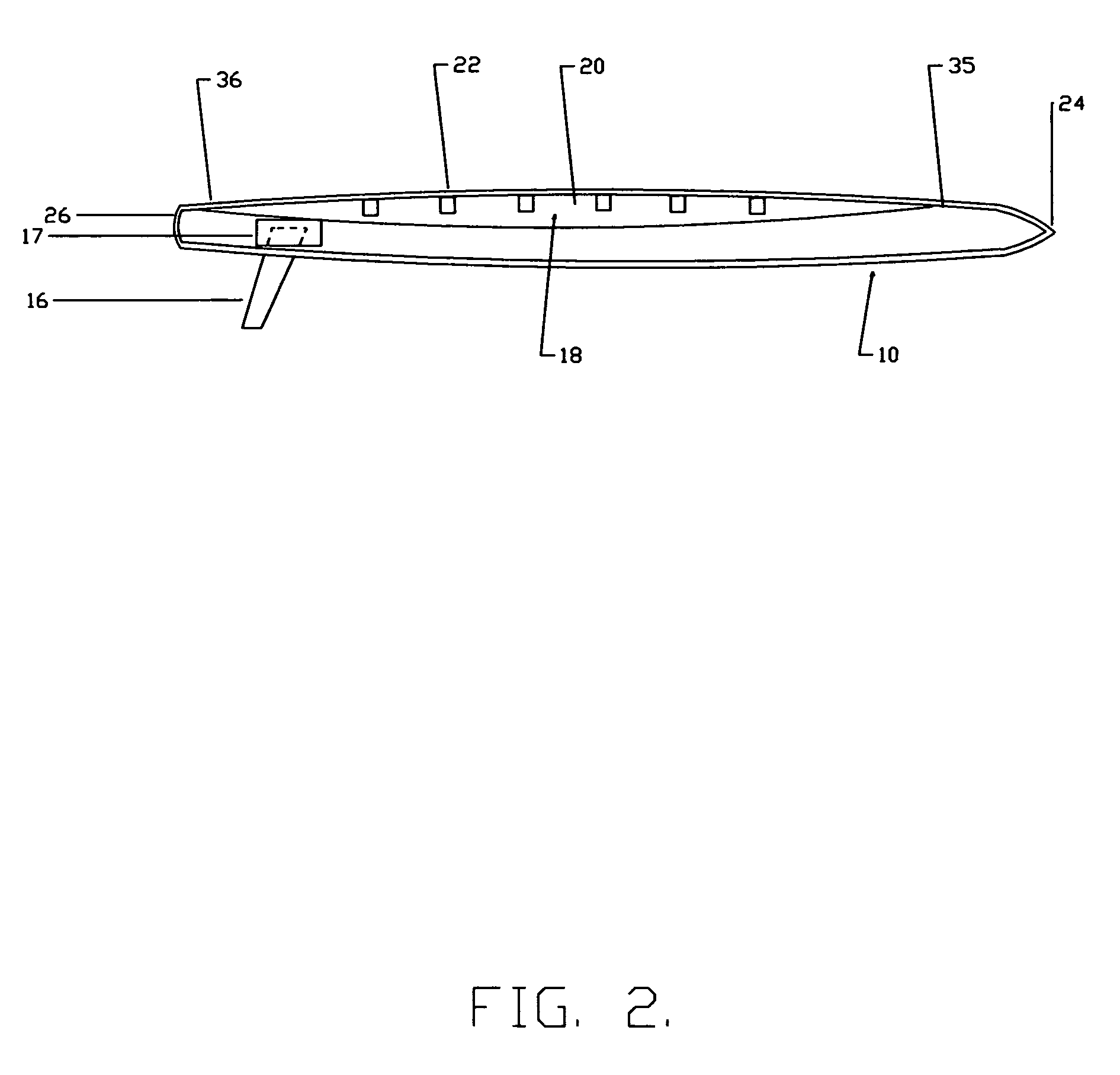Internal rib and spine reinforcement system for a hollow surfboard
a hollow surfboard and reinforcement system technology, applied in the field of sports goods, can solve the problems of board ‘goes dead’, adversely affect performance, thin foam/glass boards, etc., and achieve the effects of reducing the risk of injury
- Summary
- Abstract
- Description
- Claims
- Application Information
AI Technical Summary
Benefits of technology
Problems solved by technology
Method used
Image
Examples
Embodiment Construction
[0023]While describing the invention and its embodiments various terms will be used for the sake of clarity. These terms are intended to not only include the recited embodiments, but also all equivalents that perform substantially the same function, in substantially the same manner to achieve the same result.
[0024]A surfboard of the present invention, with the deck cut away to reveal the deck reinforcement system 18, is shown in a top-view in FIG. 1 and indicated generally by reference character 10. Surfboard 10 has a hull 12, a deck 14, a fin 16 and a fin box 17. The fin 16 itself is an after market item and typically more than one fin is used The fin 16 can be seen in FIG. 2, which is a cross-sectional view along the length of the surfboard.
[0025]In FIG. 1 the reinforcement system is indicated generally by reference character 18 and has a spine 20 and ribs 22, constructed of a rigid material, such as a laminate of carbon fiber over a core material, and fixed to the deck. The reinf...
PUM
| Property | Measurement | Unit |
|---|---|---|
| angle | aaaaa | aaaaa |
| length | aaaaa | aaaaa |
| width | aaaaa | aaaaa |
Abstract
Description
Claims
Application Information
 Login to view more
Login to view more - R&D Engineer
- R&D Manager
- IP Professional
- Industry Leading Data Capabilities
- Powerful AI technology
- Patent DNA Extraction
Browse by: Latest US Patents, China's latest patents, Technical Efficacy Thesaurus, Application Domain, Technology Topic.
© 2024 PatSnap. All rights reserved.Legal|Privacy policy|Modern Slavery Act Transparency Statement|Sitemap



